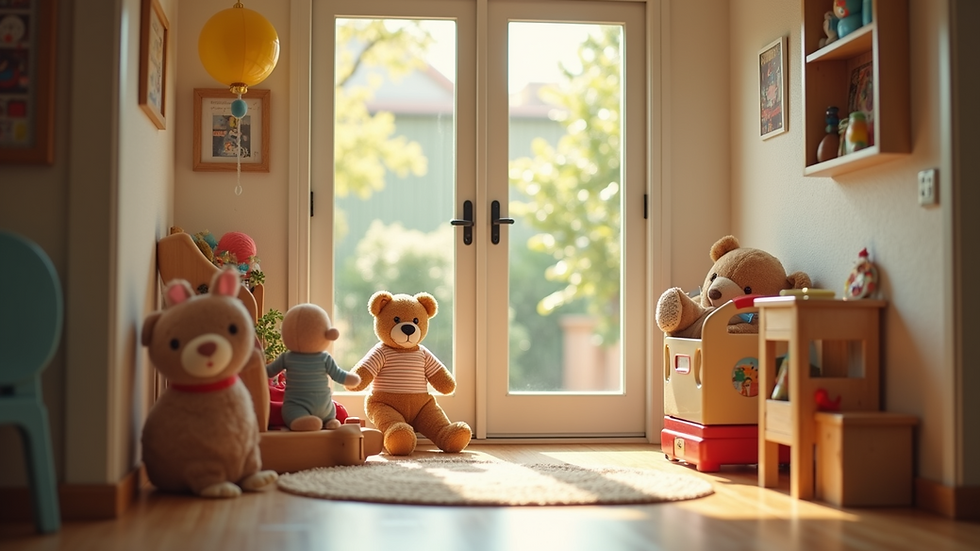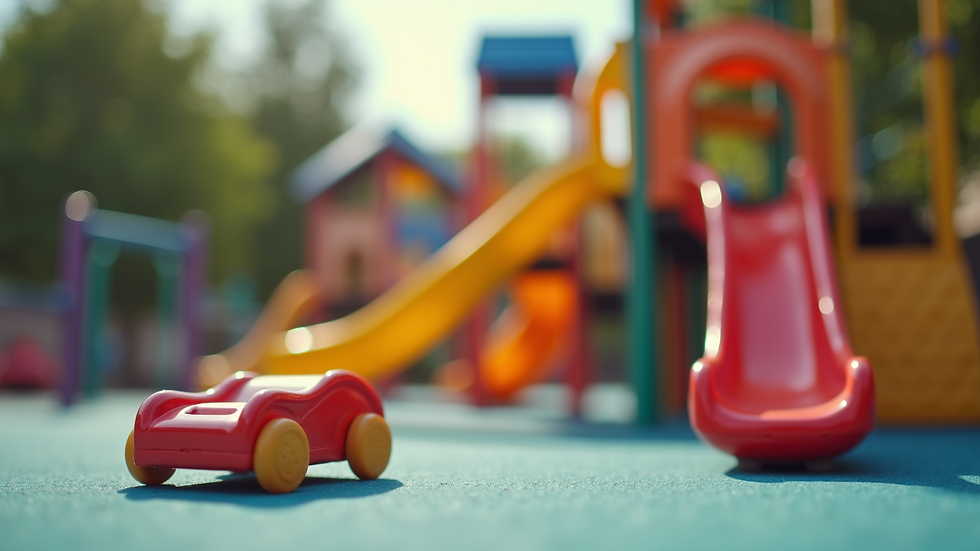Navigating Separation Anxiety at Daycare Drop-Off: Tips for Parents and Toddlers
- Minsi Chin
- Jun 18
- 4 min read
Tears at drop-off are common—and completely normal. However, seeing your child upset can be tough. Whether it’s your toddler’s first time away from you or just a rough week, we’re here to help. In this guide, we’ll explore why separation anxiety occurs and provide practical tips to support you and your little one through it.
Understanding Separation Anxiety
Separation anxiety is a typical phase for many toddlers. It often shows up as clinginess or distress when a parent leaves. This behavior is a natural part of development, showing their growing attachment to you and their awareness of the world around them.
Research indicates that separation anxiety peaks between 8 and 18 months. However, it can return during significant changes, like starting daycare. Recognizing that this anxiety is normal helps you navigate these tough moments more easily.
The Importance of Consistency
Children thrive on routine. Establishing a consistent drop-off routine can ease your toddler's anxiety significantly. Consider implementing a 'goodbye ritual'—a simple phrase or action that both you and your child can share. This creates a sense of security and predictability.
Create a Goodbye Ritual
Develop a special goodbye routine to make parting easier. This could be a quick hug, a wave from the door, or a unique goodbye phrase that only the two of you share. Keeping these rituals short is crucial—longer goodbyes can often increase anxiety.

Talking About It
Before drop-off, discuss what your child can expect. Highlight the fun activities awaiting them, such as playing with toys or making new friends. For instance, you might say, “Today you can build a tower with blocks, and your friend Mia will be there!” This helps shift their perspective from anxiety to excitement.
Use Emotional Validation
Validate your child’s feelings. Let them know it is okay to feel sad or scared. Reassurance is key. Phrases like “I’ll be back after lunch” can support the idea that your absence is temporary, lessening their worry.
Practice Drop-Off Scenarios
To prepare your child, practice drop-off scenarios at home. Role-playing can make the situation feel more familiar and less daunting. You can use dolls or stuffed animals to reenact the drop-off, ending with a comforting reunion to emphasize safety.
Arrange Playdates
If your toddler finds social interactions challenging, organize playdates with their peers. This can build their confidence and social skills. Regular interactions with other children will help make the daycare environment feel less intimidating. A study found that children who engage in frequent playdates showed 30% more comfort in group settings.
Communicate with Caregivers
Open communication with daycare staff is vital. Share your concerns, and let them know your child's unique needs. Experienced caregivers often have effective strategies to help ease anxiety. For example, they might gently distract your child with engaging activities immediately after you go.
Timing Matters
Choose drop-off times wisely. A quiet moment can provide your child with the space to adjust. Additionally, pay attention to your child's mood and energy levels to determine the best time for goodbye. For instance, if your child is cranky after a short nap, consider a later drop-off when they are more rested.
Monitor Signs of Stress
Observe your child's behavior before drop-off. If they seem tired or irritable, a different time might work better. Children are generally more adaptable when they feel well-rested and content.
Build Emotional Intelligence
Help your child understand their feelings. Use stories and books to discuss emotions openly. Encourage them to express what they feel. For example, after reading a book about a sad character, ask, “How do you think that character feels?”
Encourage Independence
Promote small acts of independence at home to prepare your child for daycare. Allow them to try simple tasks on their own, like selecting their clothes or putting on their shoes. This empowers them and builds their confidence. Studies have shown that children who practice these simple tasks are 40% more likely to feel confident when facing new situations.

Keep Yourself Calm
Your emotions can influence your child. It is important to remain calm during drop-off. Practice deep breathing or use a calming mantra to recite. These methods help model emotional regulation, showing your child how to cope with their feelings.
Don’t Sneak Away
While it might be easier to leave when your child is distracted, this approach can harm trust. Always say goodbye and assure them you will come back. Consistent honesty is essential for building trust during these moments.
What If Anxiety Persists?
If significant anxiety seems to last too long, it may indicate a larger issue. In such cases, consider consulting a pediatrician or a child psychologist. They can provide insights and tools if separation anxiety prevents your child from engaging in daycare or social activities.
Embracing This Phase Together
Navigating separation anxiety at daycare drop-off is a challenge, yet understanding it and applying practical strategies can significantly ease the situation. Remember, you're not alone—many families face similar struggles.
Be patient and compassionate with both your child and yourself during this time. With love, consistency, and a bit of creativity, your toddler can learn to embrace their time away from you confidently.
By integrating these tips for daycare drop-off and understanding your child's emotional world, you will foster an environment that encourages independence and a love of learning.




